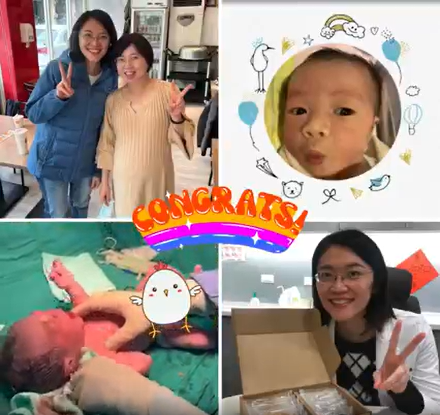
Stories
3 Failed IUI's, 1 Successful IVF!
Dr. Hsiao Shuan Yang
Share
Many patients delay their pregnancy plans due to busy work schedules and unknowingly reach an advanced maternal age, making the journey to parenthood more challenging. Congratulations to my junior colleague, who, not only has had a baby but has also been promoted to a Chief Attending Physician in reproductive medicine! Such a wonderful double blessing!

After multiple failed intrauterine insemination attempts, she decided to start IVF treatment
In the high-pressure environment of a medical center, my junior colleague was as busy as a spinning top, which delayed her pregnancy plans until she reached advanced maternal age. By the time she tried her third intrauterine insemination (IUI), she unexpectedly stimulated over 8-9 mature follicles. Due to concerns about multiple pregnancies and endometrial aging, she decided to abandon the third IUI attempt.
🚩 Note: In IUI, 3-5 follicles are ideal. Too many can lead to risks of multiple pregnancies and endometrial aging.
Since she couldn’t proceed with the third IUI, and out of concern that the same issue might arise in future attempts, she decided to move directly to IVF treatment.
One embryo transfer at a time to avoid the risk of multiples
The IVF process, including the injections and egg retrieval, went smoothly, and her husband even soothed her to sleep on retrieval day—it was a sweet moment. However, the first transfer of a good-quality frozen embryo didn’t result in pregnancy.
We both understood that, at her age, the success rate of implanting one high-quality blastocyst was around 60-70%. Since there were still many frozen embryos, she decided to try again in the next cycle.
As the second transfer approached, she asked me, "Should I transfer two embryos this time?" I turned and glanced down at her, who is about 150 cm tall, and said, "Not a good idea. If you end up with twins, it could be tough for someone your size. The chance of having twins with two embryos is around 30%, and if you have a preterm birth, it could get complicated."
She already knew all of this, as the current IVF subsidy policies also aim to reduce the risk of multiples by limiting the number of embryos transferred. We, as medical professionals, constantly advise patients to reduce the number of embryos transferred to avoid the risk of multiple pregnancies, but when it's your case, you still wrestle with it. It’s true—it's easier to be objective when you're on the outside looking in.
🚩 Note: According to the Health Promotion Administration's IVF subsidy regulations: For women ≤ 35 years old, a maximum of 1 embryo can be transferred; for those aged 36-44, up to 2 embryos can be transferred. If these limits are exceeded, the subsidy will not be granted.
Successful pregnancy after the second transfer — Congratulations on the birth of her baby!
After a few days of contemplation, she said, "I’ll just transfer one. I shouldn’t gamble too much."
Following the second transfer, she successfully became pregnant and gave birth to an adorable baby! I even received live updates from the operating room on the day of her C-section. I’m truly so happy for her!

Seminars

